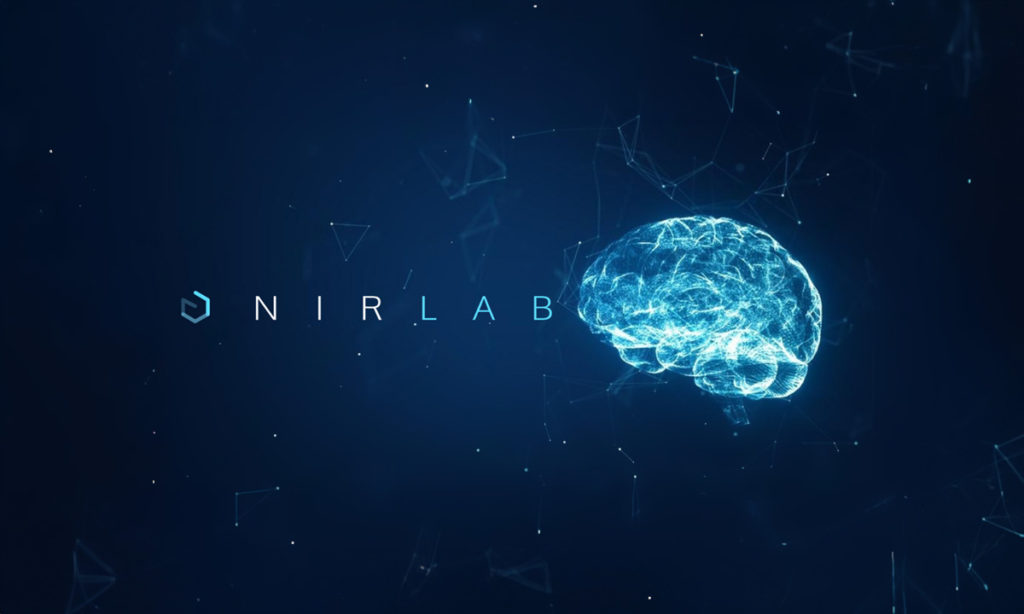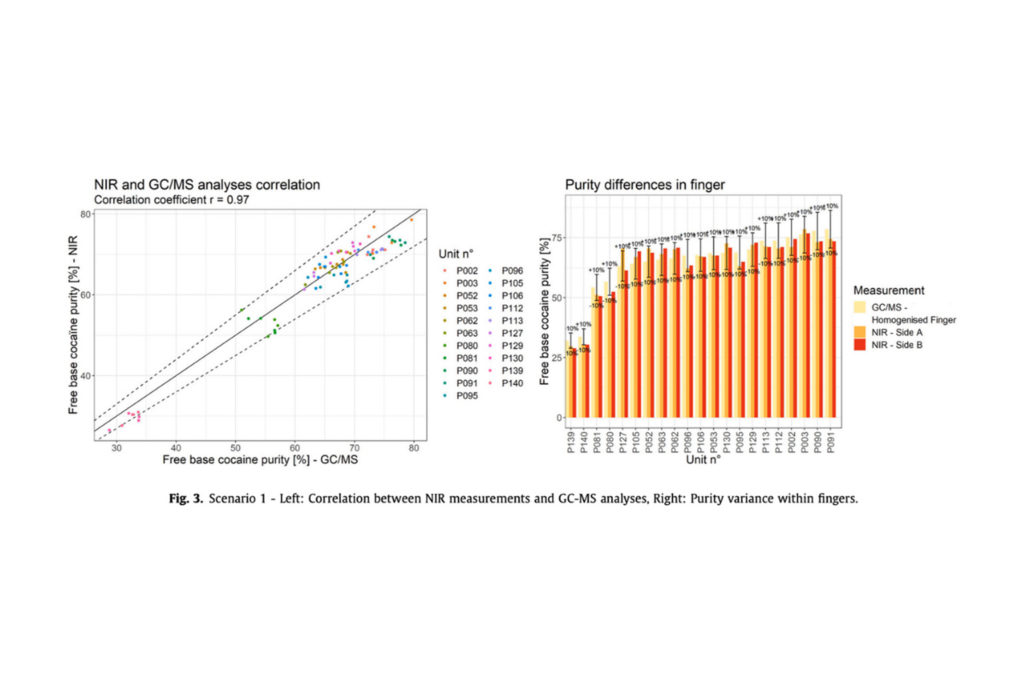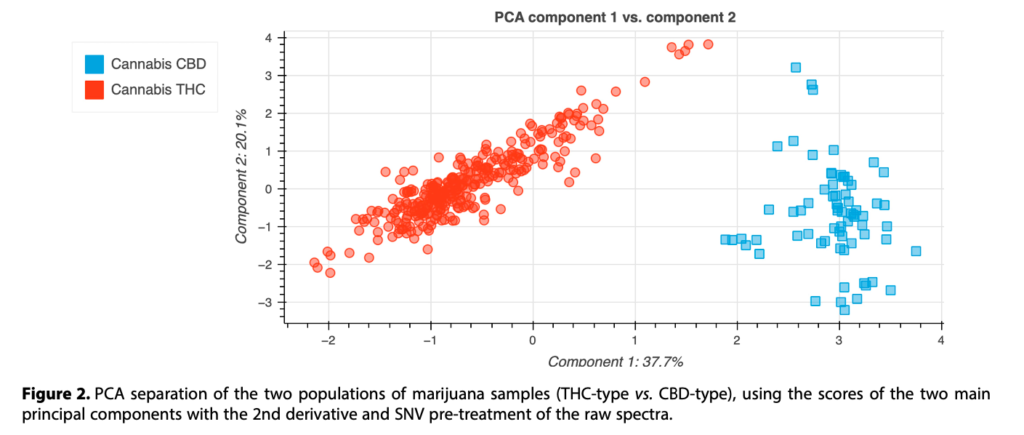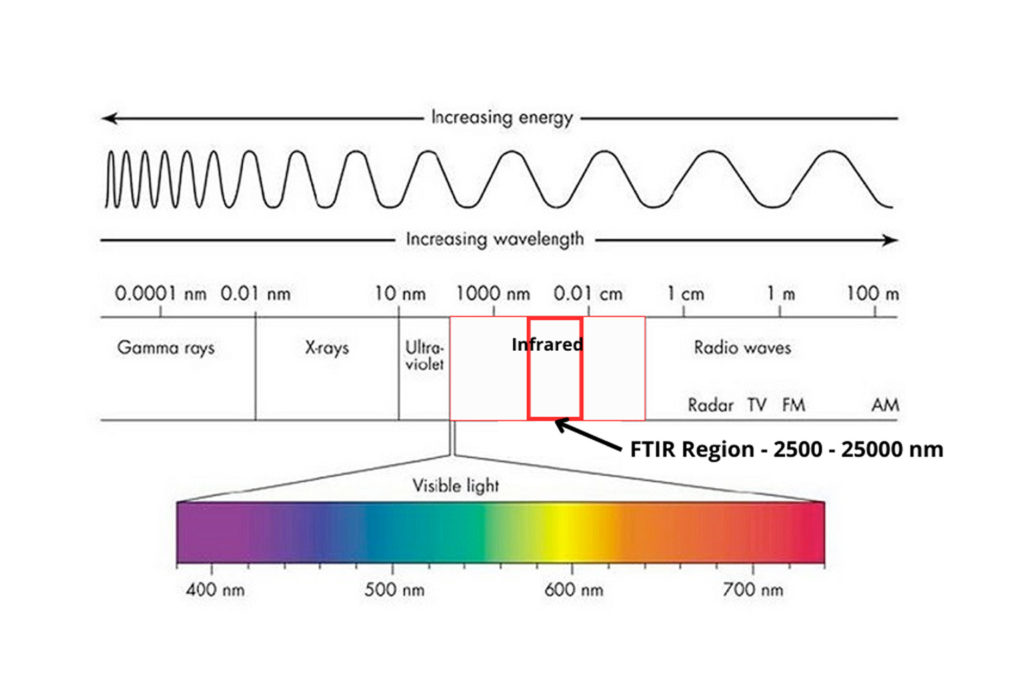
In the world of spectroscopic analysis, two prominent methods stand out: Near-Infrared (NIR) and Fourier Transform Infrared (FTIR) Spectroscopy. These methods are known for their distinct capabilities and applications. Both techniques are invaluable in the realm of material analysis, providing unique insights into the composition and characteristics of various substances. In this comprehensive guide, we will delve into the fundamentals of both NIR and FTIR spectroscopy. We will compare their features and explore their diverse applications, especially in the context of NIRLAB’s expertise in NIR technology.
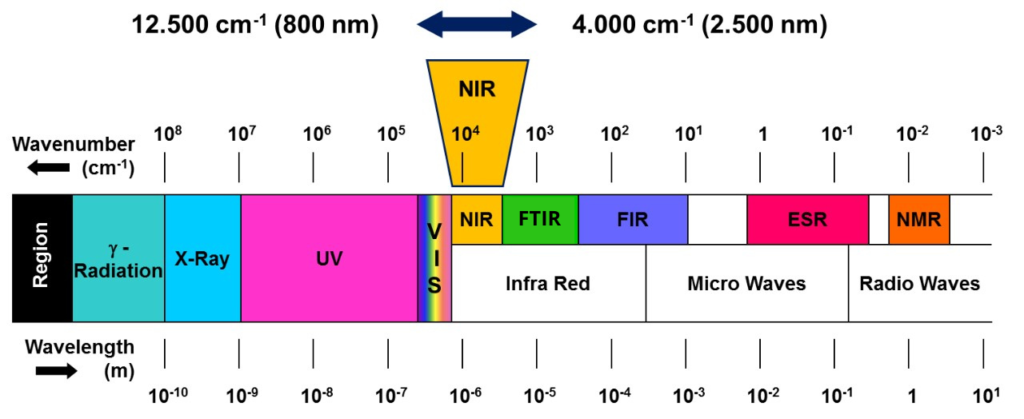
Understanding NIR Spectroscopy
Fundamentals of NIR Spectroscopy
NIR spectroscopy operates in the near-infrared region of the electromagnetic spectrum (780 to 2500 nanometers). This method is particularly effective in analyzing organic compounds, leveraging the absorption of near-infrared radiation to provide insights into their functional groups. Hence, NIR spectroscopy stands out for its non-destructive nature, allowing for repeated analyses without altering the sample. To learn more about Near Infrared (NIR) spectroscopy, check out our blog “The Science Behind NIR: How It Helps in Material Identification“
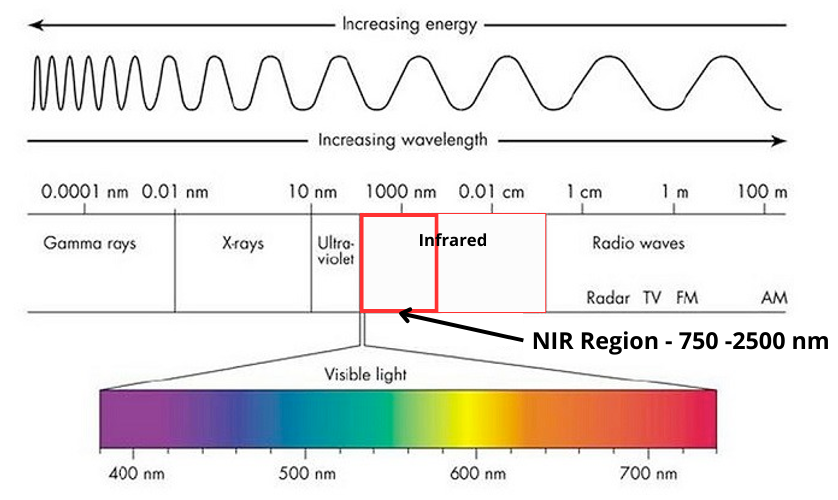
Advantages of NIR Spectroscopy
- Rapid Analysis: NIR spectroscopy delivers results quickly, typically within seconds, making it ideal for applications requiring immediate insights.
- Non-Destructive Testing: It offers a non-invasive approach, preserving the integrity of the sample.
- Versatile Applications: From pharmaceuticals to agricultural monitoring, NIR spectroscopy is widely applicable across various industries.
- Safety and Ease of Use: Utilizes low-energy radiation, ensuring safety for both the operator and the sample.
Exploring FTIR Spectroscopy
Principles of FTIR Spectroscopy
FTIR spectroscopy involves the collection of infrared spectra using the Fourier Transform mathematical process. It covers a broader range of the infrared spectrum compared to NIR, generally from 4000 to 400 cm-¹. Hence, this technique is particularly effective for in-depth analysis of chemical compositions, making it a staple in laboratory environments for research and development, material science, and chemical analysis.
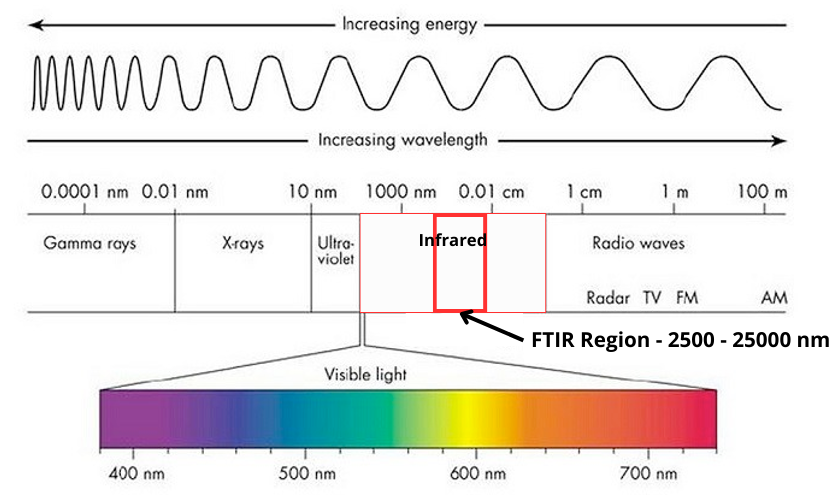
Benefits of FTIR Spectroscopy
- Molecular Fingerprinting: Offers detailed information about molecular structures and is particularly effective in identifying unknown materials.
- Wide Spectral Range: Covers a broad range of the infrared spectrum, capturing more molecular vibrational information.
- Quantitative and Qualitative Analysis: Suitable for both qualitative identification and quantitative analysis of various compounds.
- Application Versatility: Used in environmental, pharmaceutical, chemical, and forensic analyses.
Comparative Analysis: NIR vs. FTIR
Key Differences
Choosing between NIR and FTIR spectroscopy depends largely on the specific requirements of the analysis. NIR, with its rapid, non-invasive analysis, is ideal for scenarios requiring immediate insights. NIRLAB’s handheld NIR devices excel in these environments, offering fast, accurate results with minimal sample preparation.
In contrast, FTIR is more suited for situations where a detailed analysis of the molecular structure is required, albeit with a longer preparation and analysis process. While FTIR provides a deeper insight into molecular structures, NIR’s versatility and speed, especially in portable forms as developed by NIRLAB, make it a more practical choice in many industrial and field applications.
Applications in Industry
NIR spectroscopy’s practical applications are vast and varied. In the pharmaceutical industry, NIRLAB’s handheld devices are revolutionizing quality control processes, enabling rapid analysis of drug compositions and concentrations. In agriculture, these devices play a crucial role in soil and crop analysis, providing essential data for optimal crop management.
FTIR spectroscopy, while less versatile in terms of portability and ease of use, is indispensable in chemical analysis and material science. It provides comprehensive insights into complex chemical matrices, aiding in the development of new materials and the analysis of environmental samples.
NIRLAB’s NIR Handheld Devices
The real game-changer in modern material analysis has been the advent of NIR handheld devices, and NIRLAB has been at the forefront of this revolution. These devices embody the perfect blend of accuracy, portability, and ease of use. They provide rapid, lab-grade analysis within seconds, eliminating the need for elaborate sample preparation and streamlining workflows in various settings, from fieldwork to manufacturing floors.
NIRLAB’s commitment to innovation is evident in their continuous integration of advanced machine learning algorithms with their NIR technology. This fusion not only enhances the accuracy and speed of substance analysis but also keeps NIRLAB’s devices at the cutting edge of technological advancement.
Conclusion
The comparison between NIR and FTIR spectroscopy highlights the diverse capabilities and applications of each method. NIR spectroscopy, particularly in the form of NIRLAB’s handheld devices, offers a practical, rapid, and non-destructive solution for a wide array of industries. It stands as a testament to NIRLAB’s commitment to innovation and excellence in the field of spectroscopic analysis.
FTIR spectroscopy, with its detailed molecular insights, remains a crucial tool in scientific research and material analysis. However, for on-site, rapid, and user-friendly analysis, NIRLAB’s NIR handheld devices are unmatched. They represent not just a technological advancement but a paradigm shift in how we approach material analysis in various sectors.
In summary, while both NIR and FTIR have their place in the spectrum of spectroscopic analysis, the portability, efficiency, and versatility of NIRLAB’s NIR handheld devices make them a preferred choice in many practical applications.
To explore more about spectroscopy and discover the full capabilities of NIRLAB’s technology, we invite you to read our other informative articles, here. For personalized inquiries, please don’t hesitate to reach out to us at contact@nirlab.com.
NIRLAB // Just Truth
